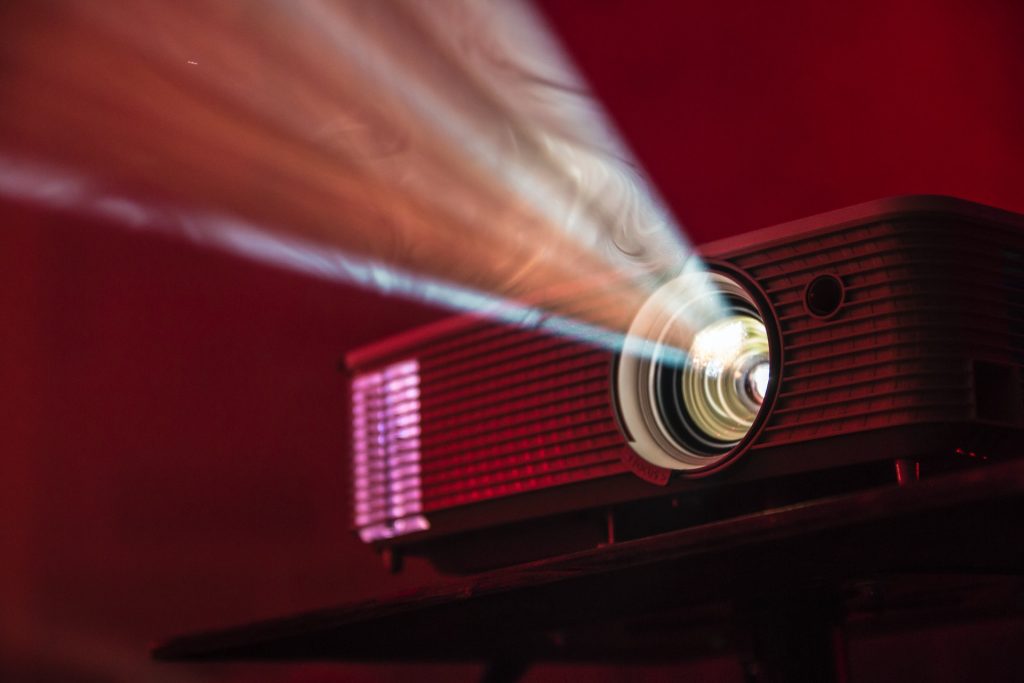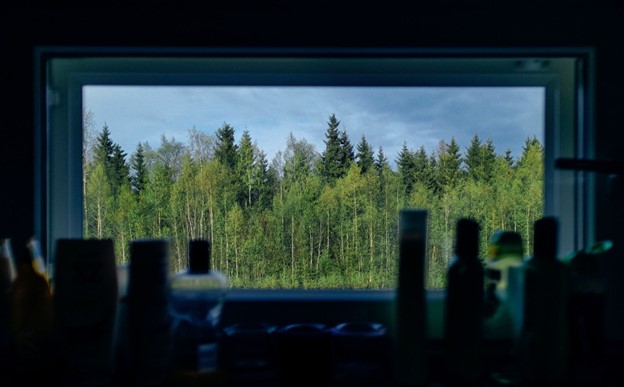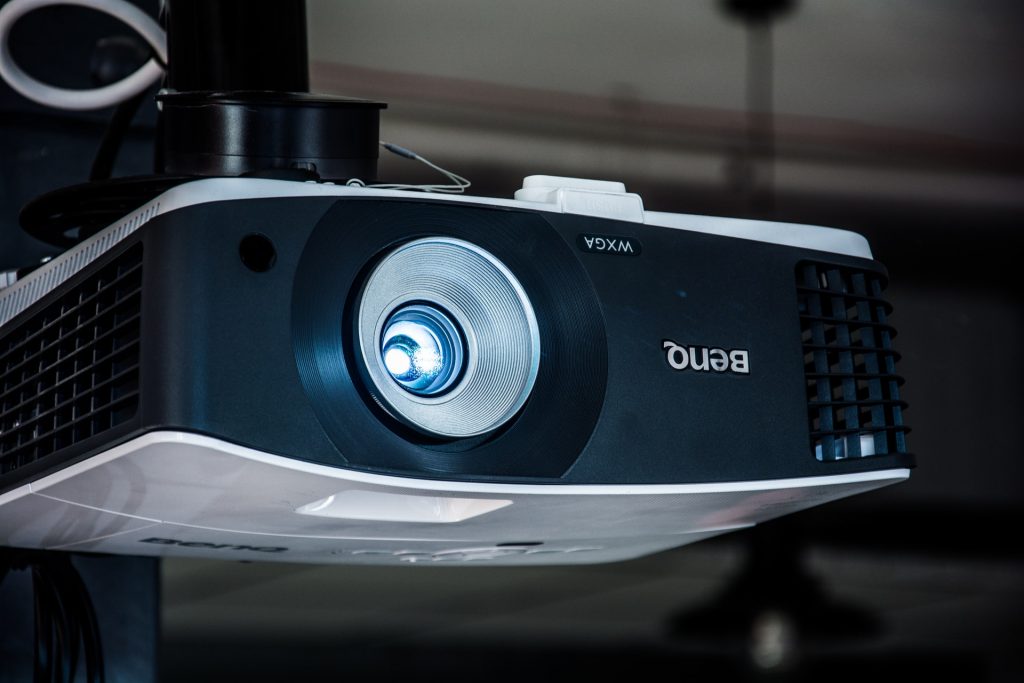Shopping for the right projector can be intimidating, mainly because of the technical terminologies you read. One of the technical terminologies you’ll encounter is “Lumens” or “ANSI Lumens.”
Your projector needs to have the correct lumen count. This article will help you understand the following concepts that will make it easier for you to buy the ideal projector:
- What are lumens (and ANSI lumens)?
- Why do lumens matter in projectors?
- How to select a projector that produces enough lumens to suit your unique needs
- Do high lumens guarantee the best viewing quality?
Let’s dive right in!
What are Lumens in Projectors?
Simply put, lumens in projectors is the amount of light (or brightness) your projector produces. When shopping for a projector, you’ll probably hear a lot about ANSI lumens (American National Standards Institute).
It is the official term used to refer to the brightness your projector produces. When shopping for a projector, it would be best to understand the environment where your projector will be used clearly.

Here’s the deal:
Understanding the environment where you’ll use your projector gives you an idea of the different light sources in the room (or outside), for example, fluorescent lighting in a conference room, the sun (or moon), lighting in a movie or exhibition hall, street lights, etc.
You are probably thinking to yourself:
“Why do lumens matter?”
Why Do Lumens Matter in Projectors?
Projector lumens matter significantly because the brightness your projector produces affects the clarity of its projections.
Consider this example;
When you light a flashlight in a dark room, you’ll see its luminous intensity. However, if you attempt to light the same flashlight in a well-lit room, the luminous intensity will not be as much as the one you experience in a dark room.
The same principle applies to projectors – ambient light affects how your projector projects images. If you intend to use your projector in a well-lit room, it would be best if you’d acquire a projector with a high lumen count.
Doing so will help you have better results – you’ll project clearer images.
How to Select a Projector with the Brightness that Bests Suits Your Needs
Now, when shopping for a projector, you cannot just buy any projector that you find at the electronic store. Not all projectors are ideal for multi-use. Two primary factors affect your projector brightness;
- Ambient light
- Projector screen size
- Ambient Light
Ambient light is the general light present in a room. It comes from natural and artificial light, for example, the sun, moon, fluorescent light, street lights, etc. Simply put, it is the light in a room before adding additional light.
Here’s how ambient light affects your projector selection:
If your room has a lot of uncontrollable ambient light, getting a brighter projector will help you have better results. Darker rooms do not need a projector with a high lumen count.
You’ll only need to ensure that your projected images have high contrast. The color of your screen plays a vital role in determining whether you’ll view clear images with high contrast.
- Projector Screen Size
Large screens require a proper distribution of light for crisp and clear projections.
Here’s a general rule that you should probably use – the wider the screen, the higher the projector brightness you’ll require.
Grouping Projectors According to their ANSI Lumen Output
- Below 3,000 ANSI Lumens
If you intend to use your projector in a low-lit or a room with tightly controlled lighting, then a projector that produces less than 3,000 ANSI lumens is ideal. In addition to lighting, a projector with less than 3,000 ANSI lumens functions well with an 80”+ projector screen.
A white or gray screen will reflect high-contrast images.
- 3,000 – 4,000 ANSI Lumens
You’ve probably been to a presentation in a conference room or even a classroom where the projected image appeared washed out. The projected image appeared washed out because the projector was not bright enough to beat ambient light.
Projectors producing 3,000 to 4,000 ANSI lumens are ideal for rooms where you cannot block ambient light. A projector that produces ANSI lumens within this range will help you get better projection results.
The screen color is essential when selecting a projector screen for a room with a lot of ambient light. A white projector screen is not ideal for bright rooms – it will reflect washed-out images.
Here’s the deal:
Gray and black screen colors are better for rooms with uncontrollable ambient light. They’ll reflect high-contrast images, meaning you’ll get to view clear projections.
- Above 4,000 ANSI Lumens
Projectors that produce 4,000+ ANSI lumens have a lot of brightness. They are ideal for large conference rooms, movie theaters, or classrooms. Remember, larger rooms require brighter projectors – light distribution is vital in projecting clear images.
Most projectors within this category are expensive because they are the brightest. Large rooms also accommodate big projector screens.
Projector Lumens For Different Settings and Screen Sizes
There are two primary settings where you can use your projectors:
- Indoor
- Outdoor
Projector Lumens for Indoor Settings
- Home Theater (Small Indoor Setting)
Most home theaters have controlled lighting, meaning there is little ambient light. A home theater projector producing less than 3,000 ANSI lumens paired with an 80”+ white or gray projector screen will help you enjoy your home entertainment.

Pro tip: When shopping for a home theater projector, it would be good to test it in video mode instead of picture mode. Doing so will help you see the projector’s brightness accurately. Home theater projectors are different from other indoor projectors, for example, classrooms – they are cinematic color projectors.
- Classroom (Mid-size Indoor Setting)
Most classrooms do not have any control over their ambient light. Remember, brighter settings require projectors that produce high ANSI lumens. It would be best for you to acquire a projector that produces 3,000 to 4,000 ANSI lumens for clear projections.
Since classrooms are mid-size spaces, the ideal size for a projector screen ranges from 60 to 72 inches. It would be best if you’d use either gray or black projector screens for rooms with a lot of ambient light.

Pro tip: When using a gray projector screen, you probably want to reflect a high-contrast image. Gray projector screens have two sides – a dull one and a shiny one. It would be best if the projector faced the dull side (matte) of the gray projector screen – that’s what will help you have high-contrast presentations.
- Conference Room (Large Indoor Setting)
Conference rooms can be enormous. Apart from ambient light and projector screen size, it would be best to consider the number of people using the space.

A projector producing less than 3,000 lumens in a conference room with low ambient light should be able to project clear images. The best screen size for an audience of fewer than 100 people is 100”.
Check this out:
As the number of people increases, the size of your projector screen and projector brightness should also increase. Remember, larger screens require proper distribution of light, and therefore, using brighter projectors will be beneficial.
An audience of more than 400 people will require a projector that produces more than 4,000 ANSI lumens. The screen should also be at least 200’’.
Projector Lumens for Outdoor Settings
Ambient light can affect your outdoor projector movie night. Outdoor ambient light comes from your neighbor’s lights, street lights, natural light like the sun or moon, etc.

Your projector screen size will undoubtedly affect the quality of your projected videos. If you intend to have a large audience of probably more than 400 people, consider getting a bigger outdoor screen and a projector with a high count of ANSI lumens.
Now, if you decide to use your projector in an outdoor setting during the day, it would be best if you’d get a projector producing more than 4,000 ANSI lumens. Also, consider getting a gray or black projector screen to avoid viewing washed-out projections.
Remember, high lumen count projectors are costly.
On the other hand, if you decide to use your projector outdoors at night, it would be best if you’d get a projector that produces less than 3,000 ANSI lumens. You can also use either a white or gray projector screen depending on the intensity of the present ambient light.
Do High Projector Lumens Guarantee the Best Viewing Quality?
It is now easy to assume that higher projector lumen counts guarantee the best viewing quality of projected images and videos.
But that is not true – high lumens do not guarantee the best quality of projected images. Higher projector lumens do not matter if you cannot find the right balance between the projector’s lamp and its color wheel.
The projector lamp gives a projector its brightness, while the color wheel controls the projector’s color performance in RGB color format. Good viewing quality can be achieved by finding the right balance between brightness and color control – which, in turn, will give you color accuracy.
Bottom line:
High projector lumens do not guarantee the best viewing quality. High-quality image projections can only be achieved by finding the balance between projector brightness and color control, in other words, color accuracy.
Summing it All Up
Shopping for the right projector can indeed be intimidating. One of the technical terminologies you’ll encounter is “Lumens” or “ANSI Lumens.”
Projector lumens matter significantly because the brightness your projector produces affects the clarity of its projections. Two primary factors affect your projector brightness; ambient light and projector screen size.
Here’s a breakdown of how you can group projectors according to their ANSI lumens output:
- Less than 3,000 ANSI lumens – rooms with low or tightly controllable ambient light
- 3,000 – 4,000 ANSI lumens – rooms where you cannot control ambient light
- More than 4,000 ANSI lumens – ideal for large meeting rooms or highly bright ambient light (for example, when using your projector outdoors during the day).
Higher projector lumens do not matter if you cannot find the right balance between the projector’s lamp and its color wheel. The projector lamp gives a projector its brightness, while the color wheel controls the projector’s color performance in RGB color format.
High projector lumens do not guarantee the best viewing quality. High-quality image projections can only be achieved by finding the proper color accuracy.


